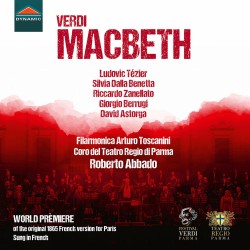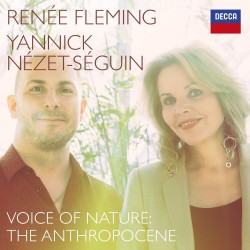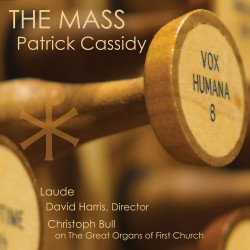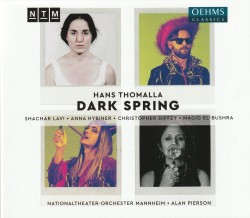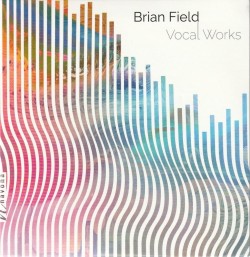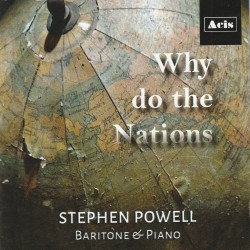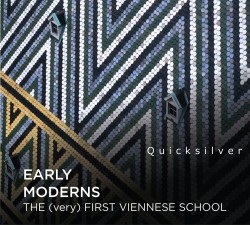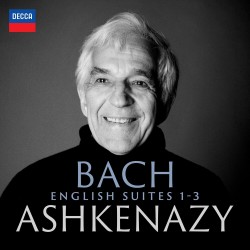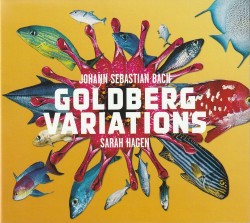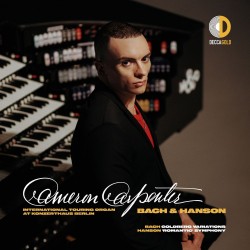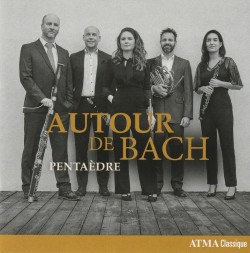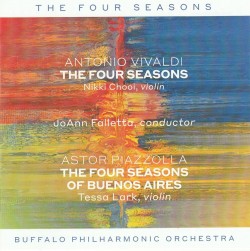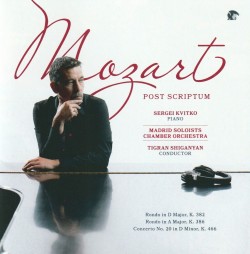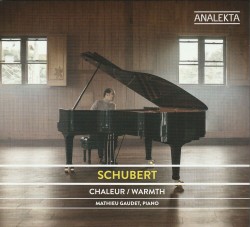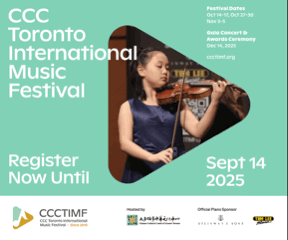Strings Attached - February 2022
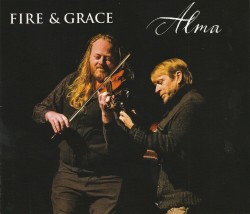 Alma is the third album of original arrangements by Fire & Grace, the duo of violinist Edwin Huizinga and guitarist William Coulter (Roaring Girl Records fireandgracemusic.com). Coulter’s plectrum guitar is an acoustic steel-string Custom Meridian made by Mike Baranik.
Alma is the third album of original arrangements by Fire & Grace, the duo of violinist Edwin Huizinga and guitarist William Coulter (Roaring Girl Records fireandgracemusic.com). Coulter’s plectrum guitar is an acoustic steel-string Custom Meridian made by Mike Baranik.
Piazzolla’s Libertango, Albéniz’ Asturias (with violin shredding!) and Vivaldi’s L’Estate – Summer open a fascinating CD, at the heart of which is Suite Español, a continuation of the duo’s project of arranging the solo music of Bach (in this case the Cello Suite No.1) and blending it with folk music, the six Bach movements in this case interspersed with melodies from Spain.
An arrangement of Tanya’s Tune, composed by the former Väsen guitarist Roger Tallroth, completes a hugely entertaining disc.
Listen to 'Alma' Now in the Listening Room
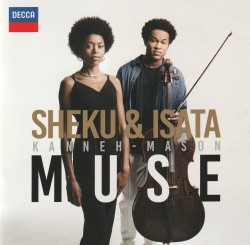 For Muse, their first album together, the young brother and sister duo of Sheku and Isata Kanneh-Mason chose two works that they love playing in concert (Decca Classics 4851630 deccaclassics.com/en).
For Muse, their first album together, the young brother and sister duo of Sheku and Isata Kanneh-Mason chose two works that they love playing in concert (Decca Classics 4851630 deccaclassics.com/en).
Barber’s Cello Sonata in C Minor Op.6, written when he was 22 and a student at the Curtis Institute in Philadelphia, opens the disc, while Rachmaninoff’s Cello Sonata in G Minor Op.19 from 1901 closes it. The duo notes that the two works are from completely different worlds, but “somehow they work together in terms of their emotional intensity.” Certainly there’s no lack of emotional intensity in these outstanding performances.
Songs by the two composers effectively tie the sonatas together on a terrific disc. The three Rachmaninoff songs – It Cannot Be!, How Fair This Spot and The Muse – were already among the duo’s favourites while the four Barber songs – There’s Nae Lark, A Slumber Song of the Madonna, With Rue My Heart Is Laden and Sure on This Shining Night – were new to them.
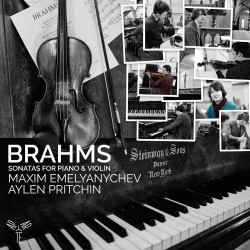 Two outstanding representatives of the younger generation of Russian musicians, pianist Maxim Emelyanychev and violinist Aylen Pritchin, are featured on Brahms Sonatas for Piano & Violin on period instruments (Aparté AP237 apartemusic.com).
Two outstanding representatives of the younger generation of Russian musicians, pianist Maxim Emelyanychev and violinist Aylen Pritchin, are featured on Brahms Sonatas for Piano & Violin on period instruments (Aparté AP237 apartemusic.com).
The instruments in question are an 1875 Steinway piano and a 1725 Jacques Boquay violin, but there’s plenty of powerful, full-bodied piano playing to accompany Pritchin’s beautifully bright and sensitive touch.
The Scherzo from the 1853 F-A-E Sonata, Brahms’ contribution to the three-movement work written with Schumann and Dietrich as a gift for Joseph Joachim, opens the disc. Fine performances of the three sonatas from the period 1878-88 – No.1 in G Major Op.78, No.2 in A Major Op.100 and No.3 in D Minor Op.108 – complete a lovely CD.
The booklet essay notes the references to Brahms’ own songs in the sonatas, particularly the first two, and there’s certainly a delightfully lyrical approach to the beautiful performances here.
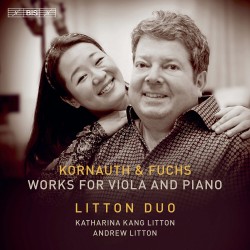 Kornauth & Fuchs Works for Viola and Piano is another CD product of the Covid lockdown, this time featuring the Litton Duo of Katharina Kang Litton, principal violist of the New York City Ballet and her pianist husband, conductor Andrew Litton (BIS-2574 bis.se).
Kornauth & Fuchs Works for Viola and Piano is another CD product of the Covid lockdown, this time featuring the Litton Duo of Katharina Kang Litton, principal violist of the New York City Ballet and her pianist husband, conductor Andrew Litton (BIS-2574 bis.se).
Through playing the Brahms sonatas together the two discovered the viola and piano music of Brahmns’ contemporary Robert Fuchs (1847-1927), whom Brahms greatly admired, and Fuchs’ student Egon Kornauth (1891-1959). Fuchs’ other students included Mahler, Wolf, Sibelius, Zemlinsky, Korngold, Enescu and Franz Schmidt.
Kornauth is represented by his Viola Sonata in C-sharp Minor Op.3 from 1912, and Fuchs by his Viola Sonata in D Minor Op.86 from 1909 and Six Fantasy Pieces Op.117 from 1926-27.
While not exactly “of their time” from a progressive viewpoint they are nonetheless beautifully crafted and extremely attractive works that require passion, warmth, feeling, effortless technique and perfect ensemble, all here in abundance on a lovely CD.
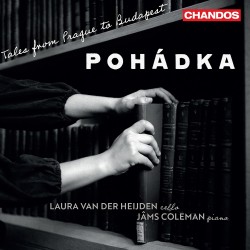 Cellist Laura van der Heijden and pianist Jâms Coleman make their Chandos label debut with Pohádka: Tales from Prague to Budapest, an album that explores the rich folk melodies of Janáček, Kodály and Dvořák (CHAN 20227 chandos.net).
Cellist Laura van der Heijden and pianist Jâms Coleman make their Chandos label debut with Pohádka: Tales from Prague to Budapest, an album that explores the rich folk melodies of Janáček, Kodály and Dvořák (CHAN 20227 chandos.net).
Janáček’s Pohádka (Fairy Tale) is typical of the composer’s late and highly individual voice. Kodály’s Cello Sonata Op.4 from 1909-10 is here, as are two short songs transcribed by van der Heijden and the Sonatina, also from 1909 and originally intended as part of the Op.4 sonata. The Dvořák is the short song Als die alte Mutter Op.55 No.4 from 1880.
There are two works by lesser-known composers: Mouvement, written for Kodály’s 80th birthday in 1963 by András Mihály (1917-1993); and van der Heijden’s transcription of the brief 1936-37 song Navzdy (Forever) Op.12 No.1 by Vitězslava Kaprálová, who died from tuberculosis in 1940 aged only 25.
Van der Heijden’s remarkably effective adaptation of Janáček’s Violin Sonata closes an excellent disc.
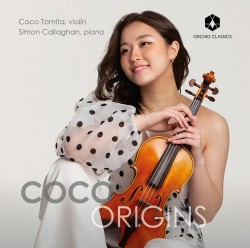 Another artist making her label debut is the young Japanese violinist Coco Tomita, who was offered a debut album on the Orchid Classics label after winning the Strings Final of the 2020 BBC Young Musician competition; she is accompanied by pianist Simon Callaghan on Origins (ORC100194 orchidclassics.com).
Another artist making her label debut is the young Japanese violinist Coco Tomita, who was offered a debut album on the Orchid Classics label after winning the Strings Final of the 2020 BBC Young Musician competition; she is accompanied by pianist Simon Callaghan on Origins (ORC100194 orchidclassics.com).
At the heart of the recital are Poulenc’s Violin Sonata – a marvellous piece, despite his doubts and misgivings – and the Ravel Violin Sonata No.2, both works given superb readings. The other major work is Hubay’s Carmen – Fantasie brillante, one of Tomita’s performance pieces from the 2020 competition and indeed played quite brilliantly.
Enescu’s unaccompanied Ménétrier (Country Fiddler) from his Impressions d’enfance Op.28 opens the disc. Lili Boulanger’s brief but beautiful Nocturne from Two Pieces is included, and the Heifetz arrangement of Debussy’s Beau Soir closes an outstanding CD.
There must surely be great things ahead for such a talent as this. [Please Note: the disc is not scheduled for release until March 2022.]
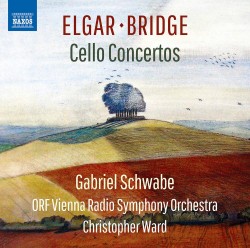 Gabriel Schwabe is the cellist on Elgar & Bridge Cello Concertos, with the ORF Vienna Radio Symphony Orchestra under Christopher Ward (Naxos 8.574320 naxosdirect.com/search/8574320).
Gabriel Schwabe is the cellist on Elgar & Bridge Cello Concertos, with the ORF Vienna Radio Symphony Orchestra under Christopher Ward (Naxos 8.574320 naxosdirect.com/search/8574320).
The Elgar Cello Concerto in E Minor Op.85 dates from 1919, when the composer was appalled and disillusioned by the suffering caused by the war and by the loss of the Edwardian world he loved. Schwabe’s performance gives you everything you could want from this beloved concerto.
The real revelation here, though, is Frank Bridge’s Oration, Concerto elegiaco. Written in 1929-30, it shares spiritual affinities and shadows of the Great War with the Elgar, and is described as “a funeral address of huge solemnity and narrative power in its outcry against the futility of war.” At times it is much like the Elgar in sound and style, but not in form, having seven connected movements with a particularly martial Allegro giusto and a central cadenza. I don’t recall ever having heard it before, but if ever a work cried out for wider exposure it’s this one.
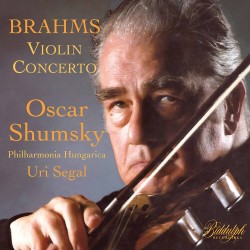 The American violinist Oscar Shumsky, who died in 2000 at the age of 83, recorded extracts from the Brahms Violin Concerto in D Major Op. 77 for the Music Appreciation Recordings LP label, but a complete performance of the work has never been available. He did, however, make a digital recording with the Philharmonia Hungarica under Uri Segal in 1984, although apparently it was forgotten for almost four decades. It has now been released by Biddulph Recordings, with the Shumsky family’s permission, as Brahms Violin Concerto (85007-2 naxosdirect.com/search/bdf-ed-85007-2).
The American violinist Oscar Shumsky, who died in 2000 at the age of 83, recorded extracts from the Brahms Violin Concerto in D Major Op. 77 for the Music Appreciation Recordings LP label, but a complete performance of the work has never been available. He did, however, make a digital recording with the Philharmonia Hungarica under Uri Segal in 1984, although apparently it was forgotten for almost four decades. It has now been released by Biddulph Recordings, with the Shumsky family’s permission, as Brahms Violin Concerto (85007-2 naxosdirect.com/search/bdf-ed-85007-2).
Shumsky was generally considered to be one of the great violinists of the 20th century, the New Grove Dictionary calling him “a player of virtuoso technique, pure style and refined taste,” qualities that are fully evident in this really fine performance. The orchestral sound is quite resonant, with the violin’s brilliant tone very much up front. It’s a gem of a CD.
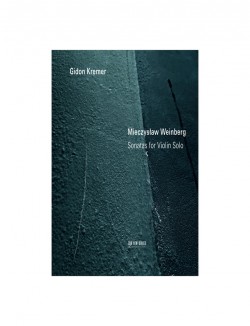 Following his 2021 recording of Weinberg’s Violin Concerto in G Minor Op.67 and the Sonata for Two Violins Op.69 Gidon Kremer continues his passionate promotion of the previously neglected music of Shostakovich’s close friend and compatriot with Mieczysław Weinberg: Sonatas for Solo Violin (ECM New Series ECM 2705 ecmrecords.com/shop).
Following his 2021 recording of Weinberg’s Violin Concerto in G Minor Op.67 and the Sonata for Two Violins Op.69 Gidon Kremer continues his passionate promotion of the previously neglected music of Shostakovich’s close friend and compatriot with Mieczysław Weinberg: Sonatas for Solo Violin (ECM New Series ECM 2705 ecmrecords.com/shop).
Sonatas No.1 Op.82 and No.2 Op.85 were both written in 1964, and are comprised of several short movements: Adagio, Andante, Allegretto, Lento and Presto for the Op.82; and Monody, Rests, Intervals, Replies, Accompaniment, Invocation and Syncopes for Op.85. Sonata No.3 Op.126 from 1979 is a single-movement work with a decided Shostakovich feel about it.
Kremer really throws himself into this music, which has a great range of emotional and technical challenges, but is capable of playing with much tenderness and sensitivity when required. This may not be the first recording of these fascinating works, but it’s difficult to imagine a set with a greater commitment.
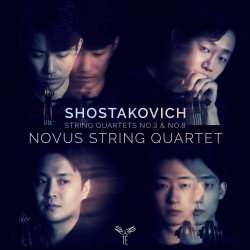 There’s music by Weinberg’s compatriot himself this month as well, with a new recording of Shostakovich String Quartets No.3 & No.8 in excellent performances by the Korean ensemble Novus Quartet (Aparté AP271 apartemusic.com).
There’s music by Weinberg’s compatriot himself this month as well, with a new recording of Shostakovich String Quartets No.3 & No.8 in excellent performances by the Korean ensemble Novus Quartet (Aparté AP271 apartemusic.com).
The String Quartet No.3 in F Major Op.73 from 1946 was triumphantly received by the public and critics alike, and seems to chart the path from the losses of the war to a return to daily life, albeit with a “forced cheerfulness” typical of the composer.
The String Quartet No.8 in C Minor Op.110 is the most autobiographical of the Shostakovich quartets, with his musical monogram D, E-flat, C and B natural (DSCH in German notation) forming the basis for much of the work. Moreover, the quartet is full of direct quotes from earlier Shostakovich works, most touchingly the melody from the opera Lady Macbeth of Mtsensk, the work which resulted in his initial persecution by the Soviet authorities. Written in 1960 in response to the wartime destruction of human life and artistic treasures in Dresden, it was portrayed by Soviet propaganda as denouncing fascism, while it was almost certainly a reaction to Soviet atrocities under the Stalin regime.
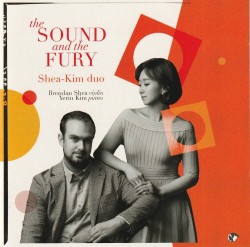 The Sound and the Fury is the first studio recording by the Shea-Kim Duo, the husband and wife team of violinist Brendan Shea and pianist Yerin Kim (Blue Griffin Recording BGR593 bluegriffin.com). Dvořák’s Mazurek Op.49, with its abundant and virtuosic double stops, was inspired by and dedicated to the great Spanish violinist Pablo de Sarasate. Grieg’s Violin Sonata No.3 in C Minor Op.45 is the biggest of his three violin sonatas and, possibly because of the simply beautiful slow middle movement, one of the composer’s favourite works.
The Sound and the Fury is the first studio recording by the Shea-Kim Duo, the husband and wife team of violinist Brendan Shea and pianist Yerin Kim (Blue Griffin Recording BGR593 bluegriffin.com). Dvořák’s Mazurek Op.49, with its abundant and virtuosic double stops, was inspired by and dedicated to the great Spanish violinist Pablo de Sarasate. Grieg’s Violin Sonata No.3 in C Minor Op.45 is the biggest of his three violin sonatas and, possibly because of the simply beautiful slow middle movement, one of the composer’s favourite works.
Janáček’s Violin Sonata, his only work in the genre, was written in early 1914, just prior to the outbreak of the Great War. The composer later referred to “the sound of steel clashing” in his head.
Shea plays with a warm tone on a violin which can tend to sound somewhat muted at times. Kim’s piano contribution is first-class throughout.
Listen to 'The Sound and the Fury' Now in the Listening Room
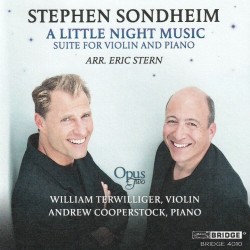 Finally, space restrictions usually preclude our covering short streaming-only releases, but in view of the recent passing of the legendary Broadway composer Stephen Sondheim, as well as the superb quality of the arrangement and performance, I just have to mention Stephen Sondheim A Little Night Music: Suite for Violin and Piano, arranged by Broadway veteran Eric Stern for the Opus Two duo of violinist William Terwilliger and pianist Andrew Cooperstock (Bridge 4010 bridgerecords.com).
Finally, space restrictions usually preclude our covering short streaming-only releases, but in view of the recent passing of the legendary Broadway composer Stephen Sondheim, as well as the superb quality of the arrangement and performance, I just have to mention Stephen Sondheim A Little Night Music: Suite for Violin and Piano, arranged by Broadway veteran Eric Stern for the Opus Two duo of violinist William Terwilliger and pianist Andrew Cooperstock (Bridge 4010 bridgerecords.com).
The third in a series of Stern Broadway arrangements commissioned by Opus Two and made with the composer’s approval, it’s just under 15 minutes in length, but the four-movement suite of Night Waltz, You Must Meet My Wife, A Weekend in the Country and Send in the Clowns is an absolute delight.
I was lucky enough to receive a promo hard copy, but it can be streamed on Amazon, Apple Music, Spotify and YouTube Music, and purchased via Amazon, iTunes and Google Play, among others.



